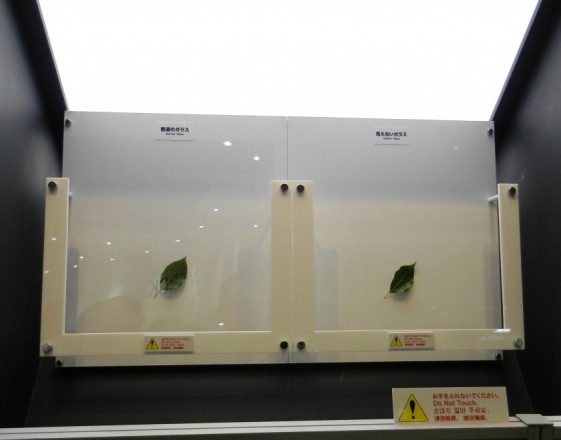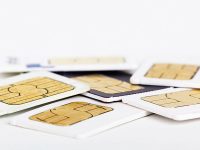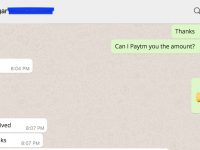How often do we come across reflection problems on screens of our devices? No matter which type of screen your device boasts of, reflection can still be a problem. Well now there is a solution so effective that it will make reflection problems a thing of the past.
“Invisible Glass” by Nippon Electric Glass Co Ltd is a glass substrate which was recently exhibited at the FPD International 2011.

NEG has managed to reduce the light reflection on the surface of the glass substrate to such an extent that the glass is hardly visible to the naked eye. Take a look at the picture above, on the left you have a normal sheet of glass while on the right you have NEG’s “Invisible Glass”, hwich you can make out from the image appears as if there is no glass present on the right side.
This was achieved by forming an anti-reflection film which is very thin, so thin that you have to measure it in nanometers. This film is applied on both the sides of the glass substrate.
Now in case of a normal glass about 92% of the light manages to pass through with 8% of the light getting reflected. But with NEG’s “Invisible Glass” a mere 0.5% of the light gets reflected with 99.5% of the light passing through the glass substrate.

Though the reflectance of a sing anti-reflection film is just around 0.1% the feat is achieved on the glass substrate only by applying almost 30 anti-reflection films combined on both the sides which adds a few nanometers to each side of the glass making it very minutely thicker and thus the 0.5% reflection is achieved.
Alas! It wont be possible to implement the solution on the current devices. But it sure can be on the future devices. All the current devices except Amazon’s Kindle equipped with Eink technology are plagued by reflection problems. Hence, it would be great if we can have this technology by NEG implemented asap.
Most of all I would like to see this technology to be implemented on LCD’s as I believe those are the ones that pose the maximum screen reflection problems which I find very annoying at times.




